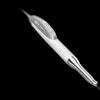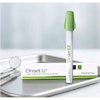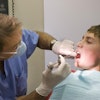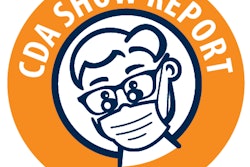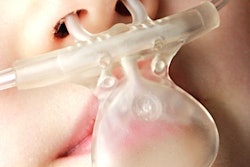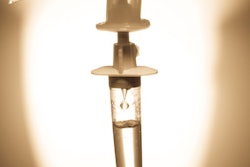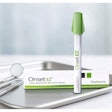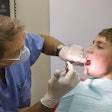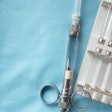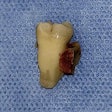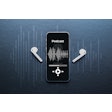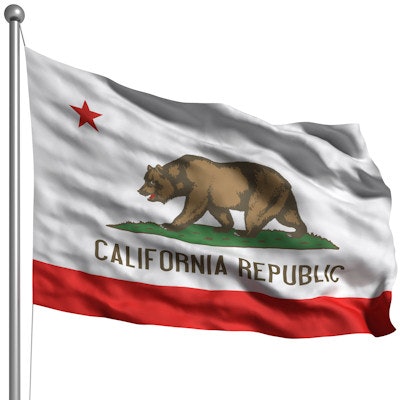
Spurred to action by the death last year of a 6-year-old boy under dental anesthesia, the Dental Board of California has proposed strict new recommendations for pediatric sedation and anesthesia. If the rules are passed by California lawmakers, dentists in the state would have to meet new criteria for personnel, education, and permits.
The Dental Board of California passed the recommendations at a session on December 1 and released them on December 9. The board had begun reviewing the adequacy of the state's sedation and anesthesia laws in protecting patients after a 6-year-old boy died during an extraction procedure in March 2015. The state Legislature has already approved a bill to increase pediatric sedation oversight during dental procedures, and the new recommendations would further increase safety measures.
"The subcommittee recognizes that few topics generate more controversy than the use of anesthesia, especially for children," said Meredith McKenzie, a member of the Dental Board of California's Subcommittee on Pediatric Dental Sedation, during the board's December 1 meeting. "And the challenge of reaching a consensus, especially among interested parties on this issue, is difficult."
5 recommendations
The pediatric anesthesia subcommittee of the Dental Board of California has been reviewing laws, regulations, scientific literature, and policies related to pediatric sedation since this spring. Although the subcommittee deemed California's present policies to be sufficient, it still provided five recommendations, ranging from data policies to personnel requirements, to strengthen California's laws.
"While the subcommittee concludes California's present laws regulations and policies are sufficient to provide protection of pediatric patients during dental sedation, it recommends the following enhancements to current [statutes] and regulations to provide an even greater level of public protection," McKenzie said.
The largest change addresses the sedation and anesthesia permit system. The board proposed changing or expanding existing permits. The changes would require additional education and personnel for minimal, moderate, and deep sedation for patients younger than age 13. The changes would also limit minimal sedation to one dose of a single sedative drug.
| Recommended permit changes for sedation and anesthesia for children younger than age 13 | ||
| Sedation type | Education changes | Personnel changes |
| Minimal sedation permit | 24 hours of instruction, including airway management and patient rescue from moderate sedation, as well as one clinical case | At least one additional staff member who is trained in monitoring and resuscitation of pediatric patients must be present. |
| Moderate Sedation permit | Proof of completing an accredited pediatric dentistry residency or equivalent training | At least one additional staff member who is trained in pediatric advanced life support and airway management must be present. For children younger than 7, an additional staff member must be present to serve as a patient monitor. |
| General anesthesia permit | Proof of completing an accredited pediatric dentistry residency or equivalent training that provides competency in deep sedation/general anesthesia for child younger than age 13, as well as proof of completing a sufficient number of cases for patients younger than age 7 | At least two additional staff members must be present:
|
Four other recommendations include the following actions:
“The effects of regulatory change on healthcare can be fraught with unintended consequences.”
- Collecting high-quality data to inform decision-making
- Updating the definitions of general anesthesia, conscious sedation, and pediatric and adult oral sedation to those used by the American Society of Anesthesiologists
- Requiring records and equipment updates, including the use of capnography for moderate sedation
- Providing the Dental Board of California additional authority to strengthen onsite inspections and evaluations
"Although patient safety is always the foremost concern, the effects of regulatory change on healthcare can be fraught with unintended consequences," McKenzie said. "Any proposal should, therefore, strive to strike a balance between established practice and evidence-based changes that provide greater patient safety."
The recommendations will be introduced to the California Legislature by January 1, 2017. However, both the Legislature and Gov. Jerry Brown would need to approve them for the recommendations to become state law, which could take several months to years.
CDA, AAPD respond
The California Dental Association (CDA) and American Academy of Pediatric Dentistry (AAPD) both responded to the new recommendations, each with their own concerns. While the AAPD generally praised the recommendations as a step in the right direction, the CDA wanted to ensure the recommendations wouldn't disrupt care for children.
"The report by the Dental Board of California shows that pediatric dental anesthesia has a strong safety record. A full discussion will be necessary on how the board's recommendation would be implemented in a way that does not disrupt medically necessary care for young children," wrote Alicia Malaby, CDA spokesperson, in an email to DrBicuspid.com. "CDA is in the process of analyzing how this recommendation will affect the dental system of care, which will influence our position."
Meanwhile, John Liu, DDS, past-president of the AAPD and current chair of the AAPD Committee on Sedation and Anesthesia, was concerned that the guidelines only apply to children ages 13 and younger. The concern was also shared by at least one dental board member, who pointed out that a small, 14-year-old adolescent may have similar anesthesia requirements to the average 13-year-old child.
"I don't think you can adequately categorize kids just based on age alone," Dr. Liu said. "Personally, I don't think [the recommendations] go far enough, unless they were to do away with these separate age categories. Our guidelines state 18 and under for reason, and I don't think that reason is being adequately addressed in what they currently have. But it is a good step in the right direction."
